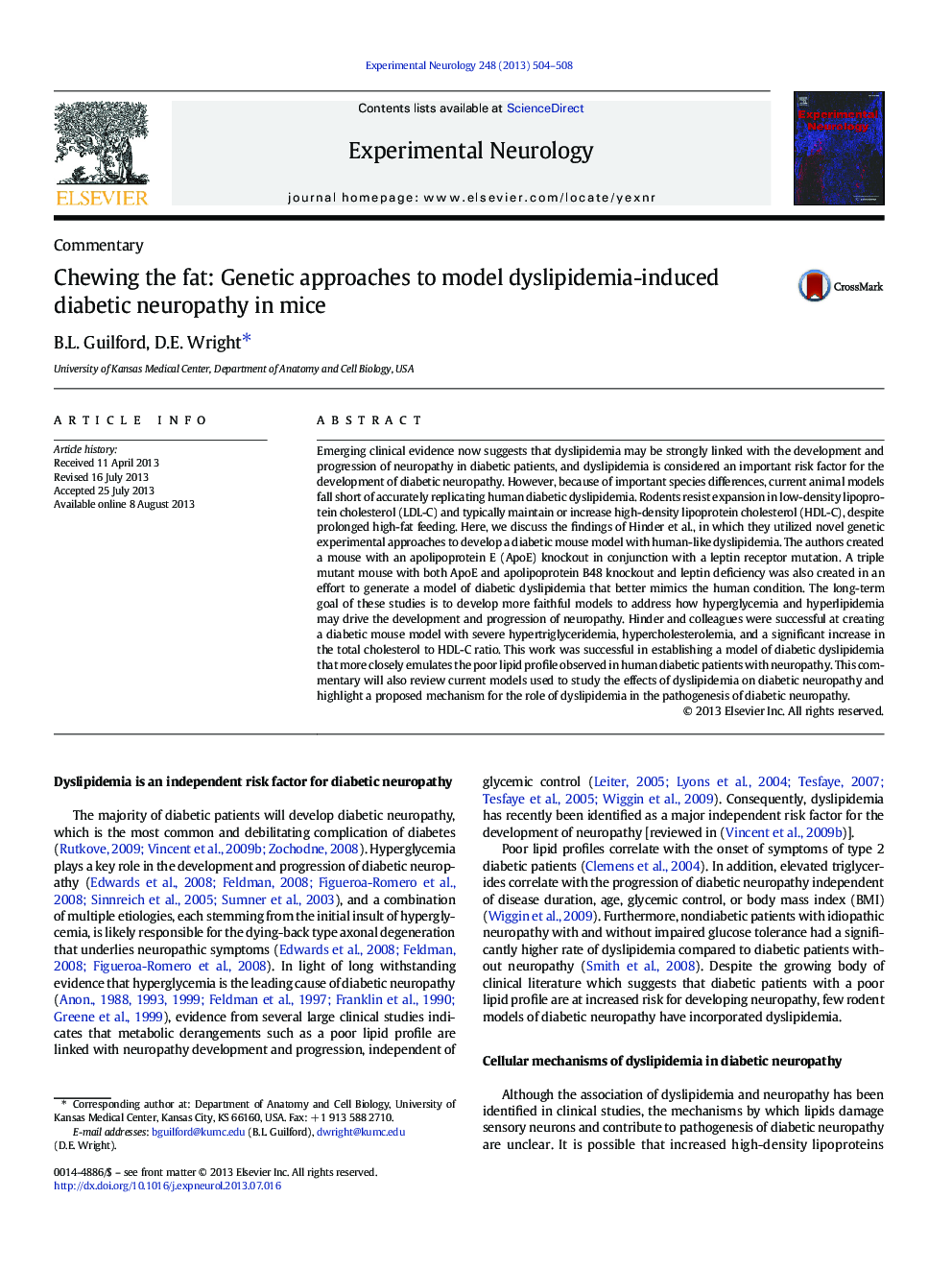| Article ID | Journal | Published Year | Pages | File Type |
|---|---|---|---|---|
| 6018021 | Experimental Neurology | 2013 | 5 Pages |
Abstract
Emerging clinical evidence now suggests that dyslipidemia may be strongly linked with the development and progression of neuropathy in diabetic patients, and dyslipidemia is considered an important risk factor for the development of diabetic neuropathy. However, because of important species differences, current animal models fall short of accurately replicating human diabetic dyslipidemia. Rodents resist expansion in low-density lipoprotein cholesterol (LDL-C) and typically maintain or increase high-density lipoprotein cholesterol (HDL-C), despite prolonged high-fat feeding. Here, we discuss the findings of Hinder et al., in which they utilized novel genetic experimental approaches to develop a diabetic mouse model with human-like dyslipidemia. The authors created a mouse with an apolipoprotein E (ApoE) knockout in conjunction with a leptin receptor mutation. A triple mutant mouse with both ApoE and apolipoprotein B48 knockout and leptin deficiency was also created in an effort to generate a model of diabetic dyslipidemia that better mimics the human condition. The long-term goal of these studies is to develop more faithful models to address how hyperglycemia and hyperlipidemia may drive the development and progression of neuropathy. Hinder and colleagues were successful at creating a diabetic mouse model with severe hypertriglyceridemia, hypercholesterolemia, and a significant increase in the total cholesterol to HDL-C ratio. This work was successful in establishing a model of diabetic dyslipidemia that more closely emulates the poor lipid profile observed in human diabetic patients with neuropathy. This commentary will also review current models used to study the effects of dyslipidemia on diabetic neuropathy and highlight a proposed mechanism for the role of dyslipidemia in the pathogenesis of diabetic neuropathy.
Related Topics
Life Sciences
Neuroscience
Neurology
Authors
B.L. Guilford, D.E. Wright,
